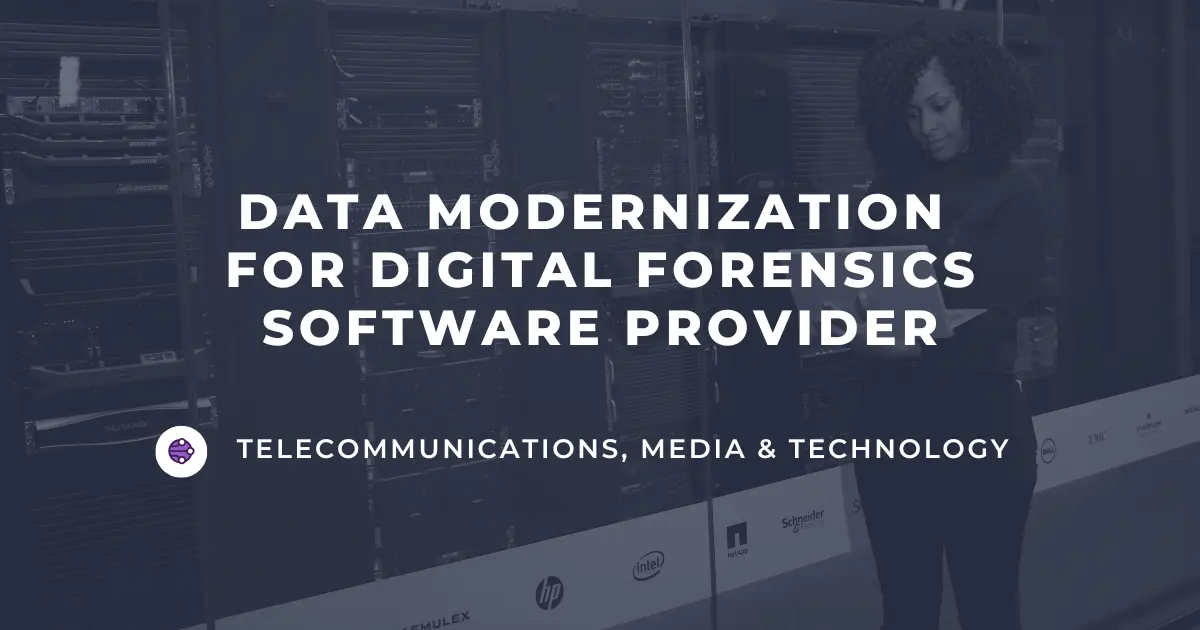Here’s the truth nobody’s talking about:
In chasing growth, most tech companies have built a wall between sales and product—when they need a bridge.
On one side: your sales organization. Relationship masterminds. Conversation experts. Operating with limited visibility into how customers actually use your product.
On the other: your product team. Data-rich. Usage-aware. Creating insights that rarely reach those who could turn them into revenue.
Between them? A revenue gap that widens every day you don’t connect the dots.
The Revenue Divide: How Sales and Product Teams Operate in Silos
Let us ask you directly:
Are you capturing every revenue opportunity right in front of you?
You’re trying to, but here’s the reality: With incomplete information, your best efforts hit a ceiling. Today’s mandate is clear—deliver growth AND profitability with fewer resources. The “growth at all costs” era is over.
The problem? You’re navigating with only half the map. This division impacts every level of your organization:
For Chief Revenue Officers: You’re pressured to forecast accurately but lack visibility into product adoption signals that could predict renewals and expansions. Your reports show pipeline and bookings but fail to connect customer behavior to future revenue potential.
For Sales VPs: Your teams spend precious hours pursuing leads with unknown product fit while missing expansion opportunities with existing customers already exhibiting buying signals through their product usage.
For Product Leaders: You capture valuable user behavior data that indicates upsell readiness or churn risk, but this intelligence rarely reaches the sales team in an actionable format.
The cost of this disconnect is substantial but often invisible. It’s not just about inefficiency—it’s about missed revenue opportunities, inflated customer acquisition costs, and preventable churn.
The Cost of Inaction
Every day this divide persists, hidden costs compound throughout your business:
- Missed Revenue Opportunities: Your customers are outgrowing their current packages while nobody’s watching. They’re creating workarounds instead of purchasing your premium features. It’s like watching customers walk past your premium offerings with full shopping carts—heading straight to the exit.
- Resource Allocation Challenges: Your talented salespeople invest precious hours with prospects showing minimal buying signals while accounts flashing bright green expansion indicators remain unnoticed. They’re fishing where the fish used to be, not where they’re jumping now.
- Vanishing Customer Lifetime Value: Without usage visibility, your renewals team is competing with one hand tied behind their back. Reactive rather than proactive, they’re missing the early signals that could transform defense into offense.
- Extended Sales Cycles: Every conversation starts from first principles when it could begin with informed insight. “Let me tell you about our features” instead of “I see how you’re using X, have you considered Y?” It’s the difference between cold-calling and warm introductions.
The Salesforce Solution: Connecting Product Data with CRM for Revenue Growth
Here’s the good news: The solution isn’t a mystery. It’s a puzzle.
A five-piece puzzle that, when assembled correctly, transforms your fragmented revenue approach into something powerful enough to deliver what seemed impossible: growth AND profitability, together.
At the center of this puzzle—the piece everything else connects to—is Modern Data Infrastructure.

Let’s be candid: For years, “Customer 360” was more marketing promise than operational reality. Integration projects created more technical debt than value, and the unified customer view remained just out of reach.
But that’s fundamentally changed.
The combination of modern cloud data warehouses, Salesforce Data Cloud’s zero-copy architecture, and advanced integration patterns has made it possible to create a seamless flow of information across your entire revenue stack—without the technical limitations that plagued previous attempts.
With this foundation in place, the remaining puzzle pieces can be connected:
Omni-Channel Order and Asset Management ensures that whether customers purchase through self-service, channel partners, or sales assistance, their experience is consistent, and your visibility is complete. Through Salesforce Revenue Cloud’s headless APIs, orders placed in any channel synchronize bidirectionally, maintaining a complete history of customer orders and the assets they own.
Product Usage Information enriches your CRM with telemetry data that transforms how your sales team operates. Instead of flying blind, reps can see which features customers use, where they’re struggling, and when they’re ready for expansion—all within the tools they already use daily.
Agent-assisted Sales leverages AI to scale your team’s capabilities while reducing costs. From intelligent lead scoring to whitespace analysis for cross-selling, these tools help your human sellers focus where they add the most value while providing automated support where appropriate.
Why Salesforce is the Ultimate Solution for Revenue Teams
You might be thinking: “We’ve tried connecting these systems before. It created more problems than solutions.”
You’re right. Previous approaches often did. But today’s landscape is different.
Here’s how Salesforce has finally cracked the code on this persistent challenge:
Revenue Cloud’s Robust APIs
Your customers don’t think in channels—they just buy. Revenue Cloud creates a seamless experience regardless of how they purchase. Self-service portals, sales-assisted deals, partner networks—all synchronized into a single view that every team can trust. No more reconciling transactions between systems or guessing what customers already own. Just clear visibility across every touchpoint, creating opportunities your team might otherwise miss.
Data Cloud Architecture
Remember when connecting systems meant costly data replication that was outdated almost immediately? Salesforce Data Cloud’s zero-copy approach changes the equation. Your data stays where it belongs. Only the insights move—promptly, completely, and without the technical overhead that limited previous attempts.
AI-Powered Insights
Raw data doesn’t drive decisions—intelligent insights do. Your sales team doesn’t need more information; they need actionable guidance. Platforms like Tableau and Salesforce AI don’t just display what’s happening; they highlight what matters and suggest what to do next. That’s the crucial difference between data and intelligence.
Workflow Automation
Some signals are too important to miss, too valuable to remain in a dashboard nobody checks. When a customer’s usage pattern indicates opportunity or risk, Salesforce doesn’t just log it—it initiates action. Consistently. Reliably. Every time it matters.
Beyond Technology: Organizational Alignment for Revenue Optimization
Technology alone rarely solves complex business challenges completely. The human and organizational elements are equally critical to success:
Metric Alignment
Your sales and product teams likely track different success measures. One celebrates closed deals. The other, feature adoption. Until these metrics connect, your teams will optimize for different outcomes, leaving value on the table between them.
Process Integration
Your teams need structured communication about what matters most. Not quarterly all-hands meetings, but regular touchpoints that translate insights into actions. The right signals need clear pathways to reach those who can act on them.
Data Comprehension
Most sales professionals excel at relationships, not data analysis. Presenting raw usage data without context is like handing someone sheet music when they need to hear the melody. Context transforms numbers into narratives that drive action.
Leadership Commitment
Executive sponsorship must go beyond approval to active championship. This transformation thrives with leaders who weave it into their strategic vision and daily decisions. When leaders connect the dots visibly, teams follow their example.
Case Study: Discovering $50 Million in Hidden Revenue Opportunities
When theory meets practice, the results speak volumes:
A leading high-tech company embraced this unified approach. Within three months, they uncovered $50 million in revenue opportunities hiding in plain sight.
These weren’t speculative projections. They were concrete, qualified opportunities their sales team simply couldn’t see before—like trying to find specific stars without a telescope.
How? Their newly connected systems illuminated patterns invisible when looking through either lens alone: Features approaching capacity limits without triggering upgrades. Users repeatedly attempting tasks that premium modules would streamline. Teams expanding beyond their license thresholds without raising flags in sales.
The breakthrough wasn’t technological wizardry—it was connecting two information sources that should have been speaking all along: product usage insights with customer relationship data.
The ROI calculation was so compelling that they quickly expanded the program across their entire customer base. The question shifted from “Can we afford this investment?” to “How did we ever measure performance without it?”
5 Questions to Identify Your Revenue Growth Potential in Salesforce
Consider these five questions that reveal the size of your untapped revenue potential:
- Can your sales team see—right now, without leaving their CRM—exactly which features each customer used this week?
- When a customer approaches 80% capacity on their current plan, does anyone get automatically notified? Or does that signal fade into background noise?
- If asked to identify your top 10 customers most likely to purchase more this quarter based on their actual product behavior, could you produce that list in minutes rather than days?
- Before a customer signals they’re considering alternatives, can you identify potential risk based on declining usage patterns? Or is churn always a surprising twist in the renewal story?
- Is your customer success team scheduling check-ins based on calendar appointments, or are they responding to actual product usage signals that indicate when customers need attention?
Be candid in your assessment. If you answered “no” to even two of these questions, you’re likely sitting on substantial untapped revenue potential within your existing customer base. These aren’t theoretical possibilities—they’re concrete opportunities waiting to be discovered.
Implementation Roadmap: 3 Steps to Connect Sales and Product Data
The journey to unified revenue intelligence can begin right where you are today:
Start Small (This Week)
Select one product usage metric that matters most—the one that consistently indicates expansion readiness. Find a practical way—even if it’s just a weekly report—to get this information to your sales team regularly. This single change can begin shifting perspectives immediately.
Go Deeper (This Month)
Map your current data landscape with fresh eyes. Where does your product usage data actually live? What would it take to connect it to your sales team’s daily workflow? Document where you are and envision where you could be with the right connections in place.
Transform (This Quarter)
Develop a comprehensive strategy that doesn’t just connect systems but reimagines how customer data flows throughout your organization. From marketing touchpoints to product usage signals to support interactions—create a blueprint for information that moves as smoothly as your customers do.
Coastal’s Data Modernization Workshop: Unlock Your Hidden Revenue Potential
You know the potential of aligning your sales-led and product-led motions. The challenge lies in implementation—where vision meets complex reality.
Technical integration points. Organizational change management. Resource prioritization. These factors can transform a straightforward concept into a challenging initiative.
This is exactly why we developed our Data Modernization Strategy Workshop. It serves as the catalyst that brings your revenue and technical leadership to a shared understanding, creating a practical roadmap tailored to your specific environment.
We’ve navigated this journey before with organizations just like yours. We understand where the common obstacles appear—from questions about consumption pricing to concerns about disrupting established workflows.
The solution exists. It’s been implemented successfully. It delivers measurable results.
The question worth considering: How much additional revenue potential could you unlock by giving your teams complete visibility into customer behavior?
Contact our team today to schedule your workshop and begin assembling your complete revenue optimization puzzle.



